Now that i’ve finally got some quiet and lazy time home, i can not only catch up on crime tv series but also post a few stories that have been languishing in draft limbo for far too long. Let’s start with Elena Chernyshova‘s Days of Night – Nights of Day, a photo series i discovered at the Fotofestiwal in Lodz. The series was among the finalists of the Grand Prix Fotofestiwal. It might not have won the award but it was the work that impressed me the most. Of course, part of my fascination is due to that typical look at the post-Soviet world but the images also made me realize the banality and almost romanticism of living right at the heart of an ecological disaster.
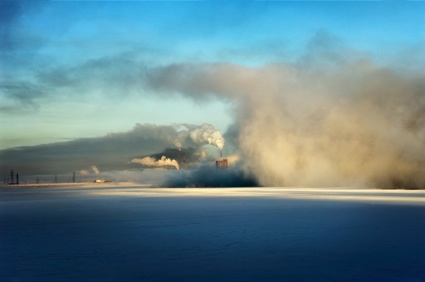 Elena Chernyshova, Days of Night – Nights of Day, Grand Prix Fotofestiwal 2014
Elena Chernyshova, Days of Night – Nights of Day, Grand Prix Fotofestiwal 2014
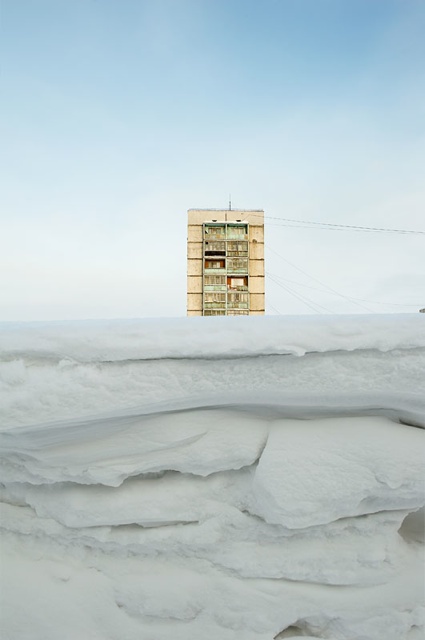 Elena Chernyshova, Days of Night – Nights of Day
Elena Chernyshova, Days of Night – Nights of Day
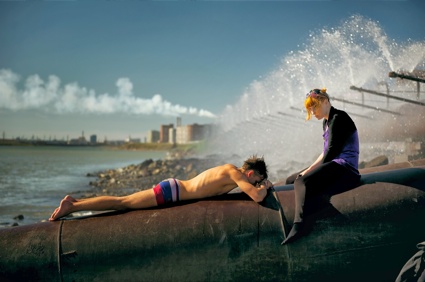 Elena Chernyshova, Days of Night – Nights of Day, Grand Prix Fotofestiwal 2014
Elena Chernyshova, Days of Night – Nights of Day, Grand Prix Fotofestiwal 2014
The young photographer traveled to Norilsk, one of the biggest cities above the Arctic Circle. In Norilsk, inhabitants live in darkness 45 days a year, temperatures can drop to minus 53 °C in the Winter and the air is one of the most polluted in the world. There is no green space in Norilsk and even leaving the city is a challenge. The easiest way to get away is by air (Moscow is a four hour flight away) and for most residents, plane tickets are barely affordable.
The reason why people would want to live there is that most of them work for the biggest metallurgical and mines complex in the world. Workers in Norilsk extract and process nickel and other metals making up approximately 2% of Russia’s GDP.
Every year the metallurgical combine emits almost 2 millions of tons of gas into the atmosphere, leading to alarming rates of cancer, depression, respiratory, cardiovascular and digestive disorders, allergies, and other health dysfunctions are widespread. The amount of sulfur dioxide in the air is so high that almost 100,000 ha of the tundra around the city is dead or in danger. Residents are forbidden from gathering berries or mushrooms due to high toxicity.
Even the story of the city is dark, the city, mines and factories Norilsk were constructed by the prisoners of Gulag in the 1930s and 40s.
Days of Night – Nights of Day is as much about the city itself as it is about how people manage to cope with harsh climate conditions, environmental disaster and isolation:
I hope these photos awake some questions, Elena Chernyshova told National Geographic. Where are the limits of human ambition in the race for natural resources? How much are we willing to damage nature and the health of hundreds of thousands of people in the drive for riches? What are the limits of human adaptation to extreme living conditions?
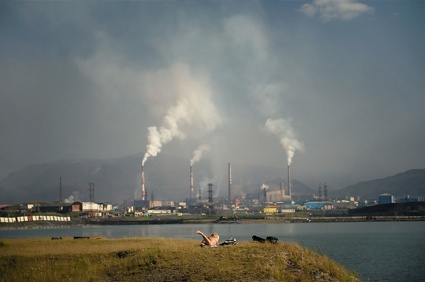 Almost 100,000 ha of the tundra around the city is dead or in danger. © Elena Chernyshova
Almost 100,000 ha of the tundra around the city is dead or in danger. © Elena Chernyshova
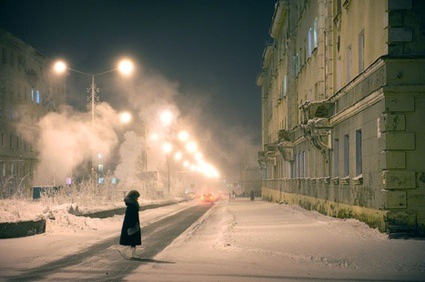 During a hard frost, the temperature can go under -55° C. Steam rises from collectors, transforming the space with a thick fog. © Elena Chernyshova
During a hard frost, the temperature can go under -55° C. Steam rises from collectors, transforming the space with a thick fog. © Elena Chernyshova
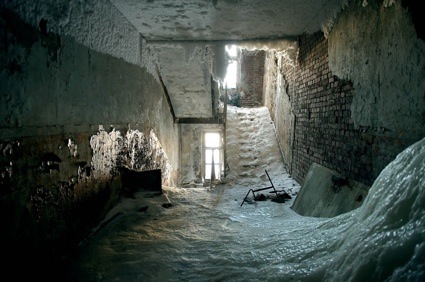 Thawing of the upper layers of permafrost has caused instability in the pilings and has led to the destruction of buildings. This is aggravated by a negligent maintenance of the sewer system, the constant leakage of hot water, and the global elevation of temperature. © Elena Chernyshova
Thawing of the upper layers of permafrost has caused instability in the pilings and has led to the destruction of buildings. This is aggravated by a negligent maintenance of the sewer system, the constant leakage of hot water, and the global elevation of temperature. © Elena Chernyshova
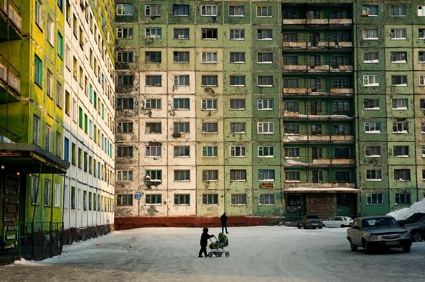 Elena Chernyshova, Days of Night – Nights of Day, Grand Prix Fotofestiwal 2014
Elena Chernyshova, Days of Night – Nights of Day, Grand Prix Fotofestiwal 2014
The majority of the buildings in Norilsk, Russia, are constructed with pre-built panels. These “Gostinka” were considered temporary accommodations for newly arrived workers, but many of them became permanent dwellings and remain today. © Elena Chernyshova
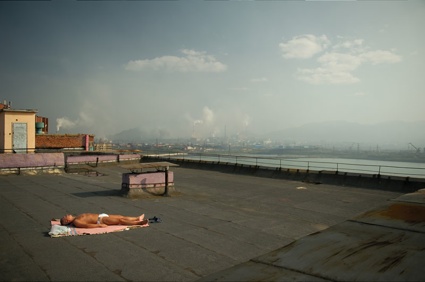 Norilsk completely lacks green spaces. Inhabitants must go 30 km by bus to find even a bit of true nature. Lack of time causes people to try and enjoy the sun in the urban area. © Elena Chernyshova
Norilsk completely lacks green spaces. Inhabitants must go 30 km by bus to find even a bit of true nature. Lack of time causes people to try and enjoy the sun in the urban area. © Elena Chernyshova
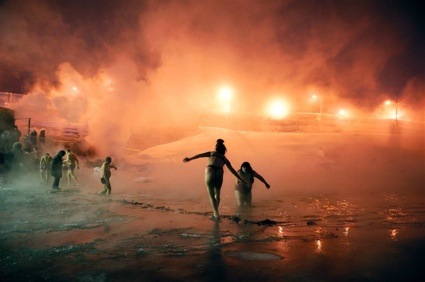 Norilsk’s “walrus” club participates in ice swimming. Afterwards people warm up in small banyas (saunas) that are located on the edge of the lake and heated from the steam of the power plant. © Elena Chernyshova
Norilsk’s “walrus” club participates in ice swimming. Afterwards people warm up in small banyas (saunas) that are located on the edge of the lake and heated from the steam of the power plant. © Elena Chernyshova
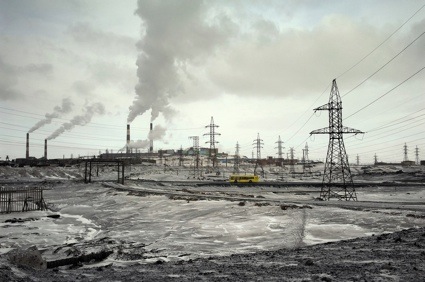 The “Big Norilsk” is an ensemble of three cities: Norilsk, Talnakh and Kayerkan. They are situated in a radius of 30km and linked by land roads. © Elena Chernyshova
The “Big Norilsk” is an ensemble of three cities: Norilsk, Talnakh and Kayerkan. They are situated in a radius of 30km and linked by land roads. © Elena Chernyshova
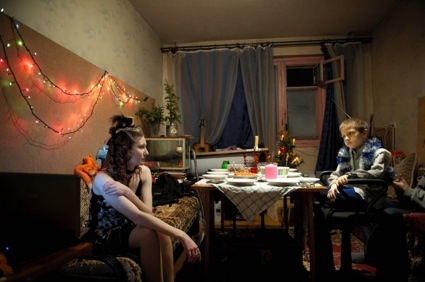 In the winter, extreme outdoor conditions don’t facilitate activities besides those which happen inside. Thus, a major part of life occurs in confined spaces. © Elena Chernyshova
In the winter, extreme outdoor conditions don’t facilitate activities besides those which happen inside. Thus, a major part of life occurs in confined spaces. © Elena Chernyshova
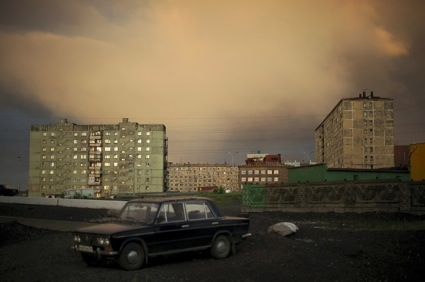 In the summer, there is a period when the sun doesn’t go under the horizon. Around 3 am, while the city sleeps, it is still illuminated by the sun. The city seems like a ghost town, emptied of its inhabitants. © Elena Chernyshova
In the summer, there is a period when the sun doesn’t go under the horizon. Around 3 am, while the city sleeps, it is still illuminated by the sun. The city seems like a ghost town, emptied of its inhabitants. © Elena Chernyshova
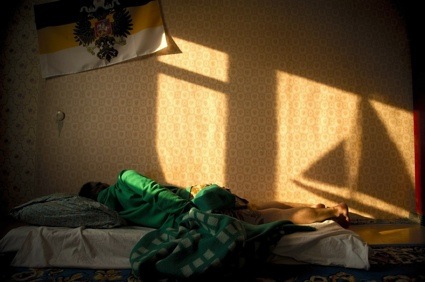 The continued presence of light disorders sleep. But Norilsk residents claim that they are tired enough after work that the light does not bother them. Still, the buildings are not equipped with shutters for protection so the bedrooms are filled with intrusive light. Only a few apartments are fitted with thick curtains. © Elena Chernyshova
The continued presence of light disorders sleep. But Norilsk residents claim that they are tired enough after work that the light does not bother them. Still, the buildings are not equipped with shutters for protection so the bedrooms are filled with intrusive light. Only a few apartments are fitted with thick curtains. © Elena Chernyshova
More images and info in Lens Culture.
Also part of the Fotofestiwal in Lodz: A guide to life forms altered by the human species.
